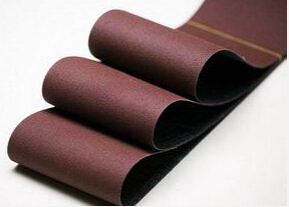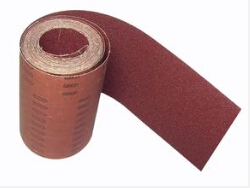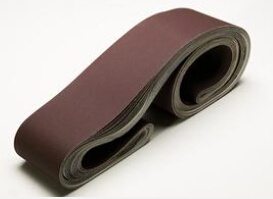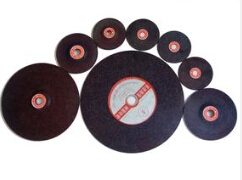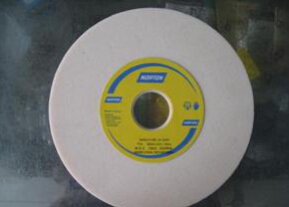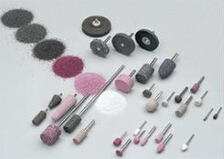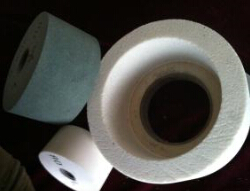Selection Principals of Grinding Wheel Hardness
Zhongsen Editor 2019-04-01The choice of hardness depends mainly on the grinding workpiece material, grinding efficiency and processing surface quality. Hardness refers to the difficulty of grinding particles falling off under the external forces of the grinding wheel, in order to meet the requirements of different workpiece material grinding, the manufacture of grinding wheel is divided into different hardness grade. Grinding Wheel selection is excellent, dull abrasive particles are not easy to fall off, grinding wheel is easy to clog, grinding heat increase, workpiece easy to burn, grinding efficiency is low, affecting the surface quality of the workpiece; the grinding wheel is too soft, abrasive particles fall off when sharp, increasing the grinding wheel loss, easy to lose the correct geometry, affecting the accuracy of the workpiece.
Therefore, the selection of the hardness of the grinding wheel should be appropriate, should also be based on the grinding wheel and workpiece contact area size, workpiece shape, grinding mode, cooling mode, grinding wheel binder type and other factors to consider the comprehensive consideration. Grinding Wheel Hardness Selection principle: Grinding soft materials to choose a hard grinding wheel, grinding hard materials to choose a soft grinding wheel, grinding soft and ductile non-ferrous metals, hardness should be selected soft; grinding thermal conductivity of the material should be selected softer grinding wheel, end grinding than circumferential grinding, grinding wheel hardness should be selected softer; under the same grinding conditions, The hardness of the grinding wheel with resin binder is higher than that of the ceramic binder grinding wheel 1~2; When the rotation speed of the grinding wheel is high, the hardness of the grinding wheel can be selected soft 1~2 small stage, and the grinding of the coolant is higher than that of the grinding wheel 1~2 the small grade. The selection of binders should be considered according to the grinding method, the use of speed and surface processing requirements and other conditions
The measurement of the hardness of the grinding wheel is very important, because the hardness represents whether the quality of the grinding wheel passes. Here we take a look at the grinding wheel hardness detection method, hand cone method in 1926, the earliest application in the grinding wheel hardness test. This method is relatively simple, inspectors use steel cones, manually insert the surface of the grinding wheel and turn, according to the feeling and the depth of insertion to judge the soft and hard grinding wheel, this method is entirely based on the experience and feelings of the inspectors, no quantitative data, low precision, difficult to quantify the hierarchical hardness.
Similar to this method, there is the Japanese large-Vietnamese test method, which is used in Japan, Canada, Taiwan, China. The large-cross test method belongs to the mechanical cone measurement method, which is developed on the basis of the hand cone method. This method can also be applied to coarse grinding wheels that cannot be measured by sandblasting method.
As a result of the use of mechanical structure, so that the force, rotary angle and other basic stability, improve the measurement reliability, and make the measurement results can be quantitative, is a more reasonable measurement method. Similar to the hand cone method, there is a scratch measurement method: This aspect is similar to the definition method of Mohs hardness, in practice to take a known hardness of the grinding wheel to draw another unknown hardness of the grinding wheel, according to the contrast of abrasive shedding how much to judge the relative and soft. Japan has developed it into a mechanical scratch test method, which can realize the quantitative measurement of the fixed force.
The standard of abrasive abrasives in the former Soviet Union stipulates that the hardness of rubber abrasives is determined by using the pressure cone method. These methods of measuring hardness, the measurement force depends not only on the strength of the binder, but also on the toughness of the abrasive, so the measured hardness can not reflect the inherent hardness characteristics of the grinding wheel.

